5.6 /10 1 Votes5.6
52% Metacritic Designer(s) Richard Morton Artist(s) Andre Gordella Initial release date 17 June 2003 | 6/10 Steam Producer(s) Andrew Watt Programmer(s) Richard Morton Writer(s) Murti Schofield | |||||||||||||||||||||||||||||||||
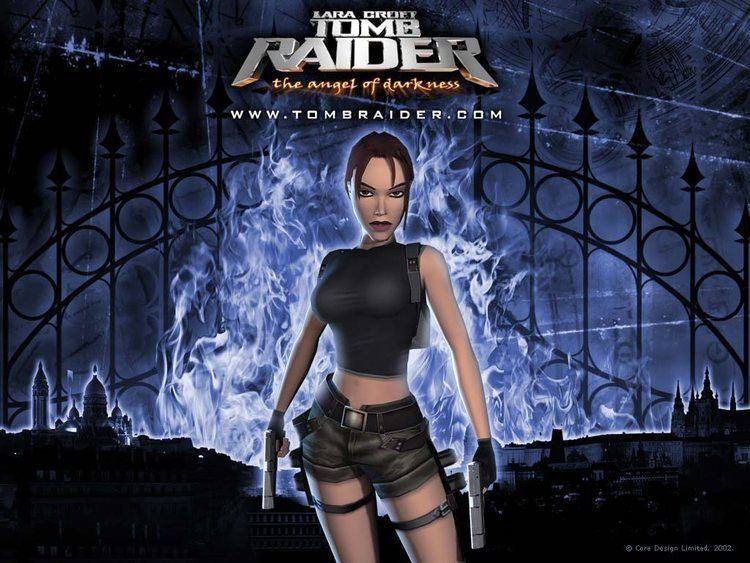 | ||||||||||||||||||||||||||||||||||
Director(s) Jeremy Heath-SmithAdrian Smith Genres Action-adventure game, Stealth game Similar Tomb Raider: The Last, Tomb Raider: Legend, Tomb Raider Chronicles, Tomb Raider: Underworld, Tomb Raider III | ||||||||||||||||||||||||||||||||||
Tomb raider the angel of darkness hd intros
Tomb Raider: The Angel of Darkness is the sixth installment in the Tomb Raider series, acting as a direct sequel to Tomb Raider Chronicles and The Last Revelation. It was developed by Core Design and published by Eidos Interactive. The game was originally released in 2003 for Microsoft Windows, PlayStation 2 and Mac OS X and was the first Tomb Raider title to be released for the PlayStation 2 console. The storyline follows Lara Croft as she attempts to clear herself of being the suspect of her former mentor Werner Von Croy's murder while investigating the activities of a black magic cult.
Contents
- Tomb raider the angel of darkness hd intros
- Flying lara croft tomb raider the angel of darkness part 1
- Gameplay
- Plot
- Development
- Music
- Reception
- Legacy
- References
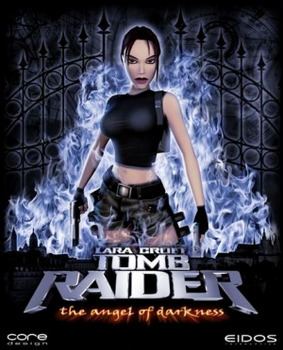
The game's development began three years before release. The intention was to create a different game from previous entries in the franchise which could compete better with newer action games, and to fully exploit the potential of the next generation of gaming platforms. The production was fraught with difficulties, and the game ended up being delayed twice. When released, the game sold 2.5 million copies worldwide, but was widely criticised for its poor controls and multiple bugs. In the aftermath of the game's release, a potential trilogy was scrapped and development of the franchise was transferred to Crystal Dynamics for the next entry in the series, Tomb Raider: Legend.
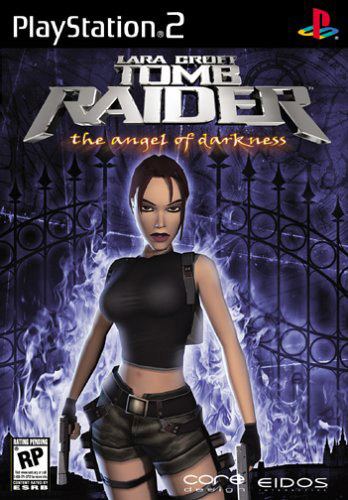
Flying lara croft tomb raider the angel of darkness part 1
Gameplay
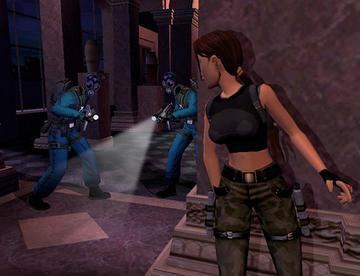
Tomb Raider: The Angel of Darkness, like previous Tomb Raider games, is a third-person action-adventure puzzle game. Players control the main series protagonist Lara Croft through the majority of the game. The majority of Lara's basic moves are carried over from the previous instalment, such as walking, jumping, climbing, swinging on ropes and standard gunplay. Her new moves include a small hop, army-crawling, hand-to-hand combat and a "super-jump" that can be performed while running. Lara can also sneak up on enemies and perform stealth attacks, flatten herself against walls and peer round corners. Lara's ability to sprint, present in the three previous entries in the series, is only available when the player opens a cabinet containing gas masks in the 'Galleries Under Siege' level. Her weapons arsenal is also modified from previous games, featuring new weapons such as a K2 Impactor stun gun and upgraded versions of weapons like the shotgun.
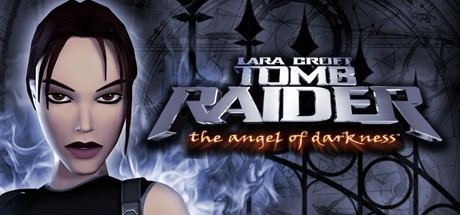
Unlike previous games in the series, Lara has a stamina meter which depletes while she is performing bouts of climbing: if the bar empties before reaching her destination, she falls. The rate at which the meter decrease slows if the player performs special actions that increase Lara's strength. These actions are also necessary to progress in many of the levels. The game incorporates elements similar to a role-playing game, whereby Lara can talk with various NPCs found throughout the environments and chose what kinds of answers to give: early in the game, these answers will directly affect her progress through the story. The game also features a second playable character, Kurtis Trent. Initially appearing to be an antagonist, the player assumes control of him late in the game. He features mainly identical moves to Lara, and his sections of the game are more based around combat.
Plot
Angel of Darkness follows on from events in Tomb Raider: The Last Revelation and Tomb Raider Chronicles, where Lara Croft was presumed dead. An unspecified time later, Lara arrives in Paris at the request of her former mentor, Werner Von Croy, who mentions that he has been tracking medieval icons known as the Obscura Paintings by a man named Echkardt. The city, and Von Croy, are gripped with fear over a serial killer the press have dubbed the "Monstrum". The Monstrum steals body parts and leaves distinctive signs made with the victim’s blood in its wake. During a confrontation with Von Croy at his apartment, a flurry of activity occurs and Lara is knocked unconscious. When she wakes, she discovers Von Croy dead, apparently having been murdered by the Monstrum, and Lara becomes the prime suspect. Fleeing his demise & running away from the cops, Lara tracks down Von Croy's friend Margot Carvier in her apartment building who agrees to give Lara Von Croy's old notebook, which he had left with her for safekeeping. Carvier reveals to Lara how Von Croy had been contracted by Eckhardt to track the Obscura Paintings while adding details on how he had been fearful doing the job. The next day, it is revealed Carvier has also been murdered by the Monstrum.
Shortly before his death, Von Croy had been in contact with a well-known French businessman and secret underworld figure Louis Bouchard. Lara must track down Bouchard through the almost-deserted backstreets of Paris, discovering from locals that Bouchard went into hiding after the death of several of his associates by the Monstrum. When she does locate him, Bouchard reveals Von Croy had contacted him for assistance in breaking into an archaeological dig beneath the Musée du Louvre. Lara gains access to the Louvre through its storm drains, and is able to uncover more information connecting the archaeological dig to the Obscura Paintings.
The paintings, which originally depicted demonic imagery, concern the Nephilim, a hybrid creature descended from angels and humans, which once lived in Turkey. A single dormant Nephilim now remains, the Cubiculum Nephili or "Sleeper". The five Obscura Paintings, when connected, form a talisman called the Sanglyph that can be used to revive the Sleeper. To prevent this, an ancient society of warrior Christian monks called the Lux Veritatis was formed and they successfully stopped Eckhardt and his order known as the Cabal by trapping him using three daggers known as Periapt Shards, which can destroy any immortal being. The Lux Veritatis leader known as Brother Obscura seized the paintings, and painted religious imagery over the evil ones and hid them, one of which is in a guarded vault beneath the Louvre. The society also created copies of the paintings known as Obscura Engravings, all of which has an encoded map that leads to the locations of the original paintings.
Lara must descend into the Lux Veritatis stronghold beneath the Louvre to retrieve it. While attempting to escape with the painting, Lara is disarmed by Kurtis Trent, the last living member of the Lux Veritatis, who wields a magical Chirugai blade. Kurtis steals the painting, but both he and Lara are knocked unconscious before they can flee. Upon regaining consciousness, Lara is met by Bouchard, who informs her of a Monstrum killing in Prague, the victim being Mathias Vasiley, an art dealer and historian whom Von Croy exchanged information of the Obscura Engravings. Bouchard then betrays Lara, attempting to have her killed, but Lara survives and makes her way to the Czech Republic.
Outside the Monstrum crime scene, Lara meets a Czech journalist named Luddick, who fills her in on Eckhardt, revealed to be an immortal black alchemist who leads a mysterious local organization called the Cabal, and whom Luddick believes is the Monstrum. Lara also encounters a captive Bouchard near the crime scene, who reveals Eckhardt's full plan for reviving the Nephilim. Soon after, Lara rediscovers Bouchard dead. With Luddick's assistance, Lara infiltrates the Cabal's headquarters, the Strahov, and in the process accidentally frees the Proto-Nephilim, the Cabal's unsuccessful attempt to breed a new Nephilim species. Meanwhile, Lara witnesses Eckhardt murder Luddick. She again encounters Kurtis, who locks her in a compartment while he kills the Proto-Nephilim using two Periapt Shards. Lara and Kurtis team up to stop Eckhardt assembling the Sanglyph, with Lara retrieving the final Obscura Painting buried deep beneath the Strahov. However, Lara must surrender this painting to save Kurtis, after he is captured by Eckhardt. Kurtis gives Lara his Periapt shards, but she will need a third lost shard to defeat Eckhardt, which Eckhardt has hidden in his laboratory. While Lara flees to track this shard down, Kurtis attempts to hold off an attack from Boaz, the horribly mutated remains of a fallen Cabal member. Kurtis succeeds in killing her, but is severely wounded in the process.
After retrieving the final Periapt shard, Lara discovers Eckardt in the midst of attempting to revive the Sleeper, using the Sanglyph and body parts stolen from the Monstrum's victims. She is able to stab him with two shards, but before she can deliver the final blow, she is interrupted by Eckhardt's right-hand man, Karel. Karel kills Eckhardt with the final shard, revealing that he is a Nephilim himself, and had used Eckhardt to ensure the survival of his species. He had also manipulated Lara, in the guise of Bouchard, Luddick and Kurtis, to retrieve the Obscura Paintings. He offers Lara immortality if she will help him complete the task, but Lara experiences a flashback to Von Croy’s murder, and sees that Karel, in Eckhardt's form, was the Monstrum. She refuses, retrieves the Sanglyph from Eckhardt's body, and plants it on the Sleeper, overloading it with energy and causing it to explode, taking Karel with it. In the aftermath, Lara discovers Kurtis' Chirugai blade, which directs her towards Boaz's chamber. Smiling, she heads inside.
Development
The Angel of Darkness started development three years prior to its release under the working title Tomb Raider next generation. As part of the preparation for the game, the company conducted market research, and decided to create a new setting and story for the main character. One of the main drives behind the game was fully utilising the new platform's potential and reinventing the character of Lara Croft, including rebuilding her character model and allowing her to perform melee combat. It was the first game in the series to be made for the PlayStation 2 platform: the previous entry in the series, Tomb Raider: Chronicles, had pushed the PlayStation to its technical limits, contributing to lower review scores and sales than previous titles in the series. Core Design separated into two teams, with a new team working on Angel of Darkness and series regulars on Tomb Raider: Chronicles. After the completion of Tomb Raider: Chronicles, lead programmer Richard Morton came over and found that the new team had gone off the rails, scrapping the entire project once already and completing only the game's basic story. The developers later admitted to being overambitious. Some of them also commented that none of the Core team were prepared for the added complexity of developing for the advanced PlayStation 2. Jonell Elliott returned as the voice of Lara Croft. This would be the last time she provided the voice, with Keeley Hawes taking over for Tomb Raider: Legend.
Among the goals of the team for Angel of Darkness were to create more complicated puzzles and make the character of Lara Croft, together with the tone of the game, darker and more hard-edged. They also wished to compete with some of the newer action-adventure games on the market, which were providing heavy competition, and include gameplay ideas from Shenmue and the Metal Gear series. Many character movements were drawn from and based directly on movements made by real people, similar to later motion capture techniques, and the world design drew from various artists and elements of films from the likes of Luc Besson and David Fincher. Murti Schofield, who had previously worked with Core Design, was brought in to write the story and script. As part of writing the background for the organisations involved in the story, he researched historical secret societies and artefacts, and accurate translations of Latin text incorporated into the game. Schofield created the character Kurtis Trent upon a request for someone who could become the focus of a spin-off franchise. Core spent two years trying to reshape the franchise as well as writing a back story in the form of a book separated into multiple chapters, with Angel of Darkness being the first of those chapters.
The Angel of Darkness was unveiled under its official name in March 2002, with a fuller demonstration appearing at E3 that year. Problems with the game were sensed at an early stage, as Heath-Smith forgot himself and began swearing at the game while trying to demonstrate the opening level at a buyer's conference. A release date was announced for November 2002, but the game got delayed into spring 2003. Eidos believed The Angel of Darkness would benefit from additional marketing support from Lara Croft, Tomb Raider: The Cradle of Life, the sequel to the original 2001 film. Despite the delays, the company pushed Core Design to release the game in time for the marketing support. In order to meet the deadline, areas of the game containing key narrative elements had to be cut; one of the losses was the explanation of how the character survived the events of The Last Revelation. Among other concepts that needed to be cut were two further locations, character animations, sound bites, and unique gameplay elements involving Kurtis. Some completed environmental assets also ended up being cut by mistake. Some of those elements were also deliberately left out by the team, who wished to bring them into future games. The team at Core Design later said that they felt Eidos forced them to get the game out before it was ready. The game was also reportedly submitted eight times to Sony before its release. The game went gold on 18 June 2003, two days before its original release date, although there was some confusion as the game had reportedly gone gold on 2 June. The game was finally released in the summer of 2003, alongside The Cradle of Life.
Music
The music for Tomb Raider: Angel of Darkness was composed by Peter Connelly and Martin Iveson. The soundtrack, compared to earlier entries in the franchise, was far more orchestral. It was also one of the few areas of the game's development that did not suffer setbacks or similar problems. The score was recorded live by the London Symphony Orchestra at Abbey Road Studios, London, in 2002. It was orchestrated by Peter Wraight and conducted by David Snell. The Europe-exclusive 'Collector's Edition' of the game included eight tracks from the game's soundtrack on the bonus documentary DVD. These tracks were later release as a stand-alone Audio CD.
Reception
Tomb Raider: The Angel of Darkness received strong initial sales, mostly driven by an aggressive advertising campaign. The game reached 6th place in the UK Top 20 sales charts, but dropped to 13th by the following week. It eventually went on to sell 2.5 million copies. The game received mixed to negative reviews from critics. At Metacritic, which assigns a normalised rating out of 100, the game received an average score of 52 and 49 for the PlayStation 2 and Windows version, respectively. Reviewers praised the game's storyline, graphics, sound, and environments, while they criticised its large number of bugs and system requirements and its poor controls, combat system, and camera movement. Gaming magazines Game Informer and PlayStation Official Magazine gave it 5.5/10 and 8/10 respectively.
The game's story received positive reviews. IGN's Douglas C. Perry praised its "compelling storyline" and "set of intriguing bit characters", while GameSpot's Greg Kasavin praised the story as "interesting", expressing surprise that it did not earn a higher ESRB rating. Eurogamer's Kristan Reed called it "a cut above most gaming fodder, and an area Core has paid an enormous amount of attention to." Game Revolution's A. A. White was less positive, stating that while the game's darker story was an improvement compared to its predecessors, it never "[managed] to build to a captivating crescendo", while the reviewer for GamesRadar called it "bountiful but confusing and ultimately of GCSE-standard creative writing." The music and sound were also highly praised. Perry called it "beautifully scored game, plush with dramatic mood and feeling", with minimal sound effects adding "a sense of variety and even peculiarity", Reed called it "excellently atmospheric throughout, and easily the best yet in the series." while Kavasin praised the game for "excellent ambient effects, a perfectly suited musical score, and first-rate voice acting."
The reaction to the graphics were mixed to positive. Perry cited multiple examples of good level design, smooth character models, surface textures and lightning, while feeling more mixed about Lara's unrealistic figure and hardened appearance. White cited the graphics as an improvement, but was unimpressed by Lara's character model and noted multiple frame-rate dips that seemed "almost like playing the game in slow motion." The GamesRadar review called the graphics "a measured improvement on [Tomb Raider: Chronicles], but not a clean break from the [previous] Croft titles." Karavin called the detailing in textures and models "impressive", but cited several points where the game suffered from severe framerate dips. Reed praised the game's graphical polish, with "almost every multi-tiered location crammed with detail and careful incidentals", but critiqued the frequent loading screens and stylised or low detail for environments and characters.
The gameplay was heavily criticised. Perry said that those aspects of the game "pale in comparison to 90% of the PlayStation 2's adventure or action-adventure games, and they actually hurt the rest of the game's best qualities", but that the new moves worked smoothly apart from the stealth actions. White criticised the new layout's negative effect on gameplay and the poor enemy AI, and Kasavin called the experience "frustrating, difficult, and tedious", though stating that such moments stood out because many areas of the game were "thrilling". Reed found the controls dated and the stealth mechanics and strength upgrade system unnecessary, while the GamesRadar reviewer cited both the gameplay and control layout as dated, citing the difficulty of effectively controlling Lara at multiple points in the game because of these issues. The camera was also criticised, with White, Perry, Reed, Kasavin and the GamesRadar reviewer all citing it as awkward to control and sometimes wayward or confusing during its scripted movements.
Legacy
In 2010, GameTrailers placed the game 5th in their "Top 10 Worst Sequels" list. The Angel of Darkness caused multiple problems for the Tomb Raider franchise. Paramount Pictures faulted The Cradle of Life's lacklustre box office performance on the poor critical reception the video game received from reviewers and fans. The head of Core Design, Jeremy Heath-Smith, resigned after the release of the game, and plans for a sequel called The Lost Dominion, part of a proposed trilogy created using the game's engine, were scrapped. Following the poor performance of both the game and the second movie, Eidos Interactive took the production of Tomb Raider games away from Core Design and assigned them to Crystal Dynamics, noted as the developers of the Legacy of Kain series. In later years, Angel of Darkness has become noted for utilising or experimenting with multiple gameplay features that later became commonplace, such as the RPG elements, stamina metre and mixing atmospheric features from different video game genres.
